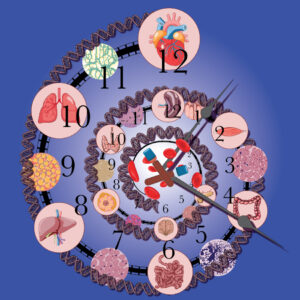
Is age really just a number? Hundreds of “aging clocks” developed over the last 10–15 years suggest that it is. These clocks aim to measure biological age rather than chronological age—initially using DNA methylation, more recent examples use, e.g., blood proteins. A recent preprint goes a step further by developing “tissue clocks” that predict the biological age of different human tissues from images or even blood samples. The authors reason that tissue structure, with its direct links to physiological fitness, is a better indicator of aging than molecular and cellular changes. For example, dwindling blood vessel numbers and accumulating fibrosis (scarring) are tell-tale signs of tissue aging—wrinkles are not just skin-deep… Perhaps we will soon be able to test which of our organs are aging faster than others, taking personalized medicine to a new level.
Tissue clocks derived from histological signatures of biological aging enable tissue-specific aging predictions from blood
bioRxiv, November 2024
From the lab of André F. Rendeiro.
Snippet by Katrina Woolcock.